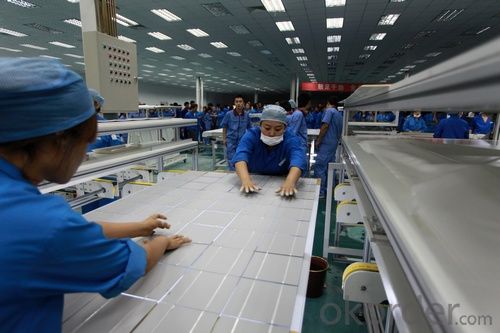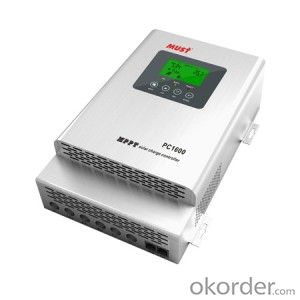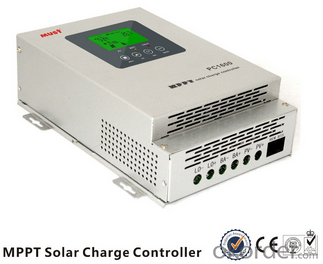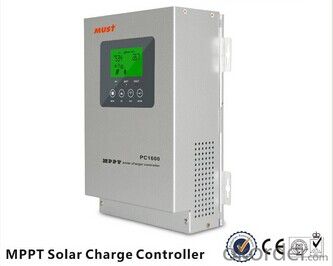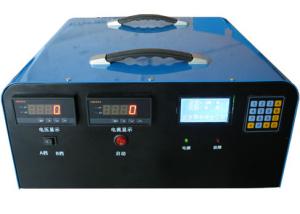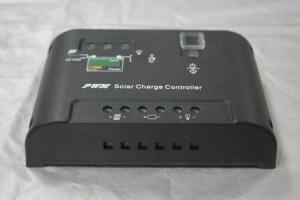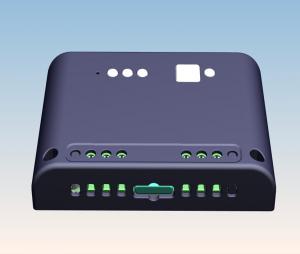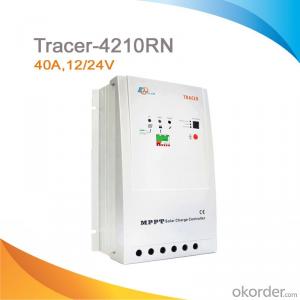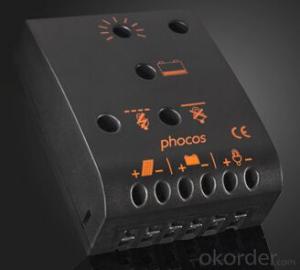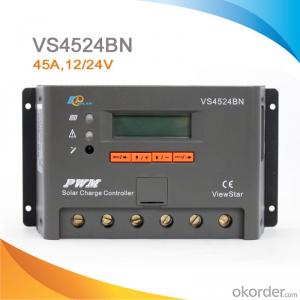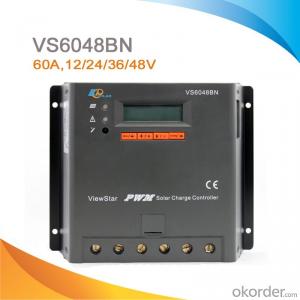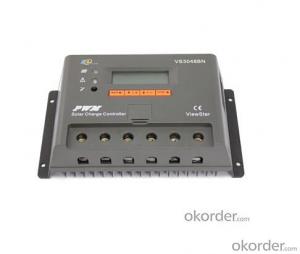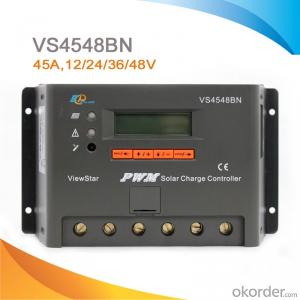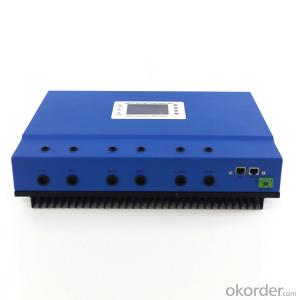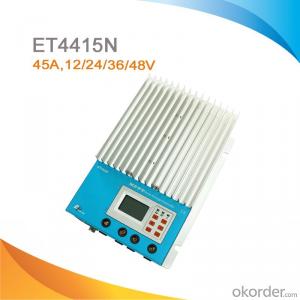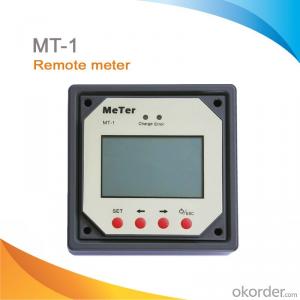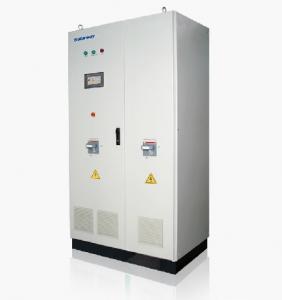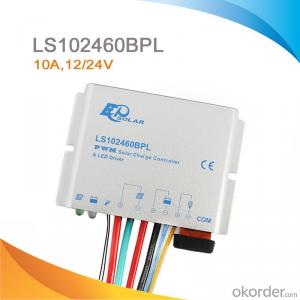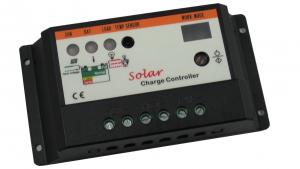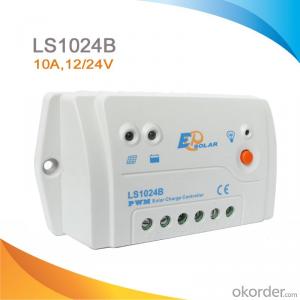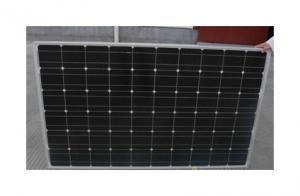Solar Charge Controllers Regulators 12/24/48V
- Loading Port:
- Shekou
- Payment Terms:
- TT or LC
- Min Order Qty:
- 50 pc
- Supply Capability:
- 100000 pc/month
OKorder Service Pledge
OKorder Financial Service
You Might Also Like
Solar Charge Controllers Regulators 12/24/48V
PC1600 is an advanced Maximum Power Point Tracking (MPPT) controller for off-grid photovoltaic (PV) systems .The controller features a smart tracking algorithm that maximizes the energy harvest from the PV by rapidly finding the solar array peak power point in all the weather condition. The controller provides higher efficiency up to 98% with lower power loss.
1. MPPT Solar Charger Controller Characteristics:
·45A/60A MPPT solar charge controller
·24V/48V auto work
·PV Output :70v-145v
·Several seconds tracking speed
·High Tracking efficiency of 99%
·Multiphase synchronous rectification technology
·Peak conversion efficiency of 98%
·DSP processors architecture ensures high speed and performance
·Multifunction LCD displays system data and status
·Four stages charging optimizes battery performance
Product Description
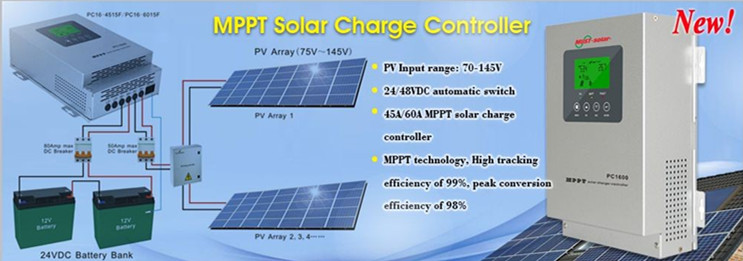
PC1600 is an advanced Maximum Power Point Tracking (MPPT) controller for off-grid photovoltaic (PV) systems .The controller features a smart tracking algorithm that maximizes the energy harvest from the PV by rapidly finding the solar array peak power point in all the weather condition. The controller provides higher efficiency up to 98% with lower power loss.
Features:
·45A/60A MPPT solar charge controller
·24V/48V auto work
·PV Output :70v-145v
·Several seconds tracking speed
·High Tracking efficiency of 99%
·Multiphase synchronous rectification technology
·Peak conversion efficiency of 98%
·DSP processors architecture ensures high speed and performance
·Multifunction LCD displays system data and status
·Four stages charging optimizes battery performance
Mppt solar charge controller details :

Mppt solar charge controller application :

2. MPPT Electronic Controller specifications:
| Model | PC16-4515F | PC16-6015F |
| Default Battery system Voltage | 24v/48vdc(adjustable) | |
| Charge Input | ||
| PV Open Circuit Voltage range | Operational max=145VDC temperature correct VOC | |
| Max PV input power(24v) | 1200W | 1600W |
| Max PV input power(48v) | 2400W | 3200W |
| Battery voltage | ||
| Nominal Voltage | 24V / 48V | |
| Absorption Voltage | 27.0V / 54.0V | |
| Refloat Voltage | 27.4V / 54.8V | |
| Float Voltage | 28.6V / 57.2V | |
| Low voltage protection point | 21.0V / 42.0V | |
| DC Output | ||
| Output Voltage | 22.0-28.6V / 44V-57.2V | |
| Rated Current | 45A continuous @40°C ambient | 60A continuous @40°C ambient |
| Warning for low voltage | 23.0V / 46.0V | |
| Cut off for low voltage | 21.6V / 43.0V | |
| Low voltage recovery | 26.0V / 46.0V | |
| Display | ||
| LED indication | Systematic operation, LV indication, LV protection, over charge protection, loads protection, short circuit protection | |
| LCD display(optional) | Charge voltage, charge current, voltage of storage battery, capacity of storage battery, output current | |
| Alarm Protections | 1.PV array short circuit protection, PV reverse polarity protection 2.Battery reverse polarity protection , Over charging protection 3.Output short circuit protection 4.Low voltage protection for storage battery | |
| General specification | ||
| Protection Level | In compliance with regulations of DIN EN60529 and standards of IP22 | |
| Charge mode | PWM ,constant current—constant voltage, function of automatic protection for storage battery | |
| Radiating mode | Fan cooling | |
| Working mode | General controller | |
| Efficiency | ≥98% | |
| Self -consumption | < 10mA | < 15mA |
| Environment | ||
| Environmental temperature | -10°C --55°C | |
| Ambient humidity | 0--90%,No condensation | |
| Altitude | ≤4500m | |
| Dimension | ||
| Unit size D*W*H(mm)/G.W(kg) | 257.1*167.6*82.9mm/3kg | |
| Package size D*W*H(mm)/G.W(kg) | 390*365*365mm(6pcs/carton)/19kg | |
4. MPPT Solar Charger Controller FAQ:
We have organized several common questions for our clients, may help you sincerely:
1. How to choose a right solar controller?
Tell us your demand, then our sales will recommend a suitable one to you.
2. What is the solar inverter warranty?
Our product warranty is valid for 12 months after delivery. We undertake to repair any malfunctioned units due to defective components of inadequate workmanship ,but specially expecting any defects resulting from normal wear and tear of improper use of the products.
3. How long can we receive the product after purchase?
a.sample orders will be delivered from our factory within 7working days .
b.General orders(under 2000pcs) will be delivered from our factory within 25 working days.
c. Bulk orders (over 2000pcs )will be delivered from our factory within 35 working days at most
4. What is the payment term?
T/T (Telegraphic transfer) / Letter of credit
- Q: Can a solar controller be used with solar panels of different efficiencies?
- Yes, a solar controller can be used with solar panels of different efficiencies. A solar controller's primary function is to regulate the flow of electricity from the solar panels to the batteries or the grid. It is designed to handle varying input voltages and currents from the solar panels. Solar panel efficiency refers to the ability of a panel to convert sunlight into electricity. Panels with higher efficiency produce more power for a given amount of sunlight. However, the efficiency of the panel does not affect the compatibility with a solar controller. As long as the solar panels are within the voltage and current range supported by the solar controller, they can be used together regardless of their individual efficiencies. The solar controller will regulate the charging process and ensure that the batteries or the grid receive the optimal amount of power from the panels, irrespective of their efficiency levels.
- Q: How does a solar controller handle battery temperature compensation for charging?
- A solar controller handles battery temperature compensation for charging by monitoring the temperature of the battery and adjusting the charging voltage accordingly. This helps to optimize the charging process and protect the battery from potential damage caused by overcharging or undercharging.
- Q: Can a solar controller be used with a battery bank that is connected in series?
- Yes, a solar controller can be used with a battery bank that is connected in series. The solar controller's main purpose is to regulate the charging of the batteries, regardless of whether they are connected in series or parallel. It ensures that each battery receives an equal charge and prevents overcharging or undercharging.
- Q: What is the maximum voltage that a solar controller can handle?
- The maximum voltage that a solar controller can handle varies depending on the specific model and brand. However, in general, most solar controllers can handle voltages up to 150 volts DC.
- Q: Can a solar controller be used with a solar-powered drone?
- Yes, a solar controller can be used with a solar-powered drone. A solar controller is designed to regulate and manage the flow of solar energy from the solar panels to the batteries or power system. In the case of a solar-powered drone, the solar controller would ensure that the energy generated by the solar panels is efficiently stored and used to power the drone's motors and electronics. This helps optimize the drone's performance and increases its flight time.
- Q: Can a solar controller be used with a solar-powered electric vehicle charging station for multiple vehicles?
- Yes, a solar controller can be used with a solar-powered electric vehicle charging station for multiple vehicles. A solar controller regulates the amount of energy being delivered from the solar panels to the charging station, ensuring efficient and safe charging for multiple vehicles simultaneously.
- Q: Can a solar controller be used with solar panels that are mounted on a pole?
- Yes, a solar controller can be used with solar panels that are mounted on a pole. The solar controller plays a crucial role in regulating the voltage and current flowing between the solar panels and the battery bank. It ensures that the batteries are properly charged and protected from overcharging. Regardless of the mounting location of the solar panels, whether on a pole or any other structure, the solar controller can still be connected to the panels to monitor and control the charging process. The solar controller will analyze the incoming power from the panels and adjust the charging parameters accordingly, maximizing the efficiency and lifespan of the battery system.
- Q: Can a solar controller be used with solar-powered electric fences?
- Yes, a solar controller can be used with solar-powered electric fences. A solar controller is designed to regulate and optimize the charging of batteries in solar power systems, which can be utilized in solar-powered electric fences to ensure efficient energy storage and usage.
- Q: Can a solar controller be used with solar-powered indoor lighting systems?
- Yes, a solar controller can be used with solar-powered indoor lighting systems. A solar controller is responsible for regulating the flow of power from the solar panels to the batteries, ensuring they are charged efficiently and preventing overcharging or damage. While solar-powered indoor lighting systems may not have the same power requirements as outdoor solar systems, a solar controller can still be beneficial in managing the charging process and extending the lifespan of the batteries. It can also provide additional features like dimming options or timers to control the lighting based on specific needs. Therefore, using a solar controller with solar-powered indoor lighting systems can help optimize the use of solar energy and improve the overall performance and longevity of the system.
- Q: Can a solar controller be used with a solar-powered office building?
- Yes, a solar controller can be used with a solar-powered office building. A solar controller regulates and optimizes the flow of electricity between the solar panels and the building's energy system, ensuring efficient and safe operation. It helps manage the charging and discharging of batteries, protects against overcharging or overvoltage, and monitors the overall performance of the solar power system in the building.
Send your message to us
Solar Charge Controllers Regulators 12/24/48V
- Loading Port:
- Shekou
- Payment Terms:
- TT or LC
- Min Order Qty:
- 50 pc
- Supply Capability:
- 100000 pc/month
OKorder Service Pledge
OKorder Financial Service
Similar products
Hot products
Hot Searches
Related keywords




